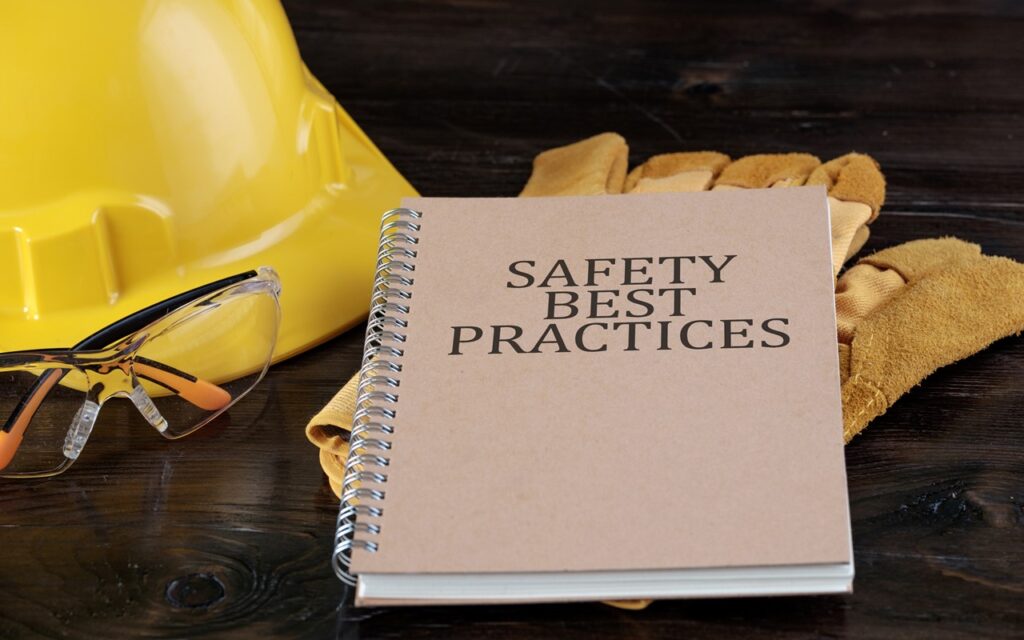Why is Hands-Free Policy Needed?
The purpose of this policy is to prevent employees from directly contacting crane loads during lifting, positioning, rigging up or landing of suspended loads where possible therefore keeping hands, feet and body out of harm’s way. The most hazardous parts of a lifting operation are hoisting and landing of the load. Therefore, at these critical stages, personnel must be as far away from the load as possible in case the load shifts or drops. Once a load is connected to a mechanical lifting device, personnel should not handle or touch a load with any part of their body as the load is being lifted or before the load is properly set down and all potential energy is released. There will always be certain jobs which will require “hands-on” for final positioning. MOSTLY, but these may be times when due to restricted workspace, working from elevated work platforms, awkward angles and body posture, that hands will need to be used.
Benefits of a Hands-Free Policy
What are the benefits of Safe Hands-Free Lifting?
- Significantly reduces crush, entanglement and hand injuries.
- Clears you of the potential injury zone for dropped objects.
- Clears you of the potential swing area.
- Personnel can see more of the load zone.
- Better posture when pushing and pulling objects.
- Less strain on the lower back and neck area.
- Creates a strong safety culture for all project personnel.
Hands On/ Hands Off Requirements
Rig Floor - Hands-Off Required
In General: Loads under full control while maintaining clear communication between signalman and driller, air hoist or crane operator for the purpose of precise spotting, final positioning, stabbing pipe, connecting or disconnecting tubular e.

Drilling:
- Trip Nipples
- Rotary Master Bushings
- Rotary Bushing Inserts
- Pipe picked up from V-Door
Logging:
- Lines Under Tension
- Sheaves
Running casing:
- Casing tools as they’re hoisted up the V-Door Ramp
- Fill UP Tool after “stinging into” the casing
- Top of casing collar while driller is lowering elevator prior to latching
- Pin of casing joint during stabbing
Cementing:
- Cementing equipment as it is hoisted up the V-Door Ramp

Rig Floor - Hands-On Allowed
In General: Loads under full control while maintaining clear communication between signalman and driller, air hoist or crane operator for the purpose of precise spotting, final positioning, stabbing pipe, connecting or disconnecting or disconnecting tubular etc.
Drilling:
- Bits
- Bit Brealers
- Drill Collars
- Reamers, Stabilizers, Drilling Subs, Lift Subs. Running Tools, Wear Bushings , Test Plugs. Packing Elements /Rotating Heads
- HWDP
- Drill Pipe
- Manual Tongs
- Manual Elevators, Side-Door Elevators, Single-Joint Elevators
- St-80’s
- Drilling Bales
- Mud Buckets
- Chiksan Hoses
- Steam Heaters
- Choke Consoles
- Air Hoists
Running Casing:
- Stabbing Boards & Hoists/ Stabbing Boards
- Fill-Up Tool while rigging up, rigging down and while stabbing stinger into casing
- Casing Elevators while rigging up, rigging down and latching or unlatching elevator
- Casing Spiders
- Casing Bales
- Power Tongs
- Individual Joints of Casing
- Casing Swages & Safety Valves
Cementing:
- Cement Heads & Manifolds
- Temporary Piping /Surface Iron Hoses
Logging:
- Wire Line Sheaves
- Logging Tools/ Survey Barrels
- Logging Adapters
- Tool Carts
PSC - World's Leading Hands-Free Safety Tools Distributor

————————————————
GET IN TOUCH WITH US NOW
28, Founta Plaza | Suryabagh | Visakhapatnam 530020. AP | India
Sales Team [email protected]
Dispatch Details – [email protected] +91-772-9990-662
Phone No’s: (+91) 96031-66448; 8341687930
www.pscrigconsumables.com I www.pscropesoapdope.com
Linkedin: https://www.linkedin.com/company/1047966/
Facebook: https://www.facebook.com/projectsalescorpn
Instagram: https://www.instagram.com/projectsalescorp/


